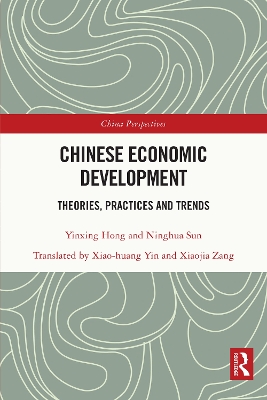China Perspectives
2 total works
The book provides a meticulous analysis of economic development and concomitant problems in China since the late 1970s and advances suggestions on further economic modernisation and transition from both theoretical and practical angles.
Based on theories from development economics and solid empirical studies, the authors, two renowned Chinese economists, provide a perceptive analysis of the Chinese development model in the post-Mao era. They shed light on questions that have perplexed many: How can China sustain the rapid growth of the past 40 years? Is there a unique "China path" to economic progress? They argue compellingly that China’s development model has to switch from a manufacturing-driven one to a brand-new approach, centring on scientific and technical innovation and the integration of its existing economic structure into an increasingly complex global economy. Such transformation will help overcome the "middle-income trap" while addressing other institutional and economic challenges.
The book will appeal to students, scholars and policymakers interested in the Chinese and global economies, as well as transnational studies in the post-COVID-19 world. General readers willing to obtain a grasp of Chinese economic development from the insider’s perspective will also find it useful.
This book deploys quantitative methods to study the operation of the Chinese economy as a whole since the reform in 1978, by combining a range of mathematical, algorithmic and computational methods to analyze rich empirical data, seeking to demonstrate the long-term economic trends and dynamics of economic growth and fluctuations in China.
To answer the core question, i.e. how did the Chinese economy become what it is, the author draws on dynamic stochastic general equilibrium (DSGE) modeling and calibration, while also exploring microfoundations to reveal optimization behavior within a context of economic change at the macro level. The book examines internal shocks in the Chinese economic system including institutional changes, credit policy and monetary policy; all closely associated with issues of enhancing the coordination and sustainability of development and the effectiveness and efficiency of policy reforms. It also elaborates on China's close interactions with the global economy, shedding light on the dynamic effects of energy prices, the Chinese Yuan exchange rate and foreign direct investment.
This book is an essential reference for researchers and students interested in the Chinese economy, methods of microeconomic dynamics and macroeconomic theory and policy.

